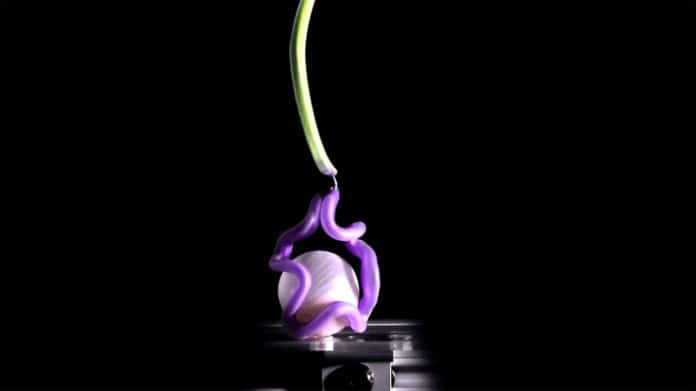Inspired by living organisms, soft robots use squishier, flexible materials, making them desirable for applications that need a gentle touch. They may one day be used to harvest produce, grab delicate items off a conveyor belt or provide personal care. These robots can also be used to create superior prosthetics and implemented in the medical profession, specifically for invasive surgery.
However, one of the significant challenges in designing soft robots is controlling how they stretch and deform, which dictates how they move.
Now, researchers at Princeton University have invented “bubble casting,” a new way to make soft robots using “fancy balloons” that change shape in predictable ways when inflated with air. The new system involves injecting bubbles into a liquid polymer, letting the material solidify, and inflating the resulting device to make it bend and move. This new technology has been used to create a robot with a gripping hand, a flapping fishtail, and a moving coil that can be used to retrieve a ball.
Bubble casting offers a simple, flexible way to create actuators for soft robots using basic rules of fluid mechanics. The method uses a liquid elastomer, which is injected into a mold as simple as a drinking straw or a more complex shape, like a spiral or flipper. The researchers then inject air into the liquid elastomer to create a long bubble throughout the length of the inside of the mold. Thanks to gravity, the bubble slowly rises to the top as the elastomer drains to the bottom. Once the elastomer cures to a rubbery consistency, it can be removed from the mold and inflated with air, which causes the thin side with the bubble to stretch and curl in on the thicker base.
By controlling a handful of factors – such as the thickness of the elastomer coating the mold, how quickly the elastomer settles to the bottom, and how long it takes to cure – the researchers can dictate how the resulting actuator will move. Using the bubble casting technology, researchers successfully cast star-shaped hands that gently grip a blackberry, a coil that contracts like a muscle, and even a set of fingers that curl up one by one as the entire system is inflated as if playing the piano.
The actuators deform when inflated with air, but other soft robotics systems employ magnetic fields, electric fields, or changes in temperature or humidity. The system is also scalable and has the potential to yield actuators several meters long with features as thin as 100 microns – almost as small as human hair.
Next, the team will use their system to create more complex actuators and explore new applications. They are interested in designing actuators that move together in sequential waves, like the rippling feet of a walking millipede. Another possibility is creating actuators with chambers that alternately contract and relax using a single pressure source to inflate them, mimicking the beating of the human heart.
